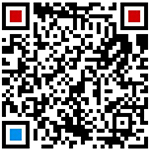Design manuals are not only functional tools, but also a combination of aesthetics and practicality. Its own aesthetic design directly affects the team's sense of trust, user experience and the landing effect of the standard. The following is an in-depth thinking and practical direction of aesthetic design in the product design manual:
1. Aesthetic Design Principles: The "Design Philosophy" of the Handbook Itself
1.1 Visual extension of brand genes
Consistency: The visual style of the manual needs to be highly consistent with the brand DNA of the product, such as:
If the brand emphasizes the "sense of technology", the manual can use dark backgrounds, cool colors, and geometric lines;
If the brand is more "warm and human", it uses pastel colors, hand-drawn illustrations, and organic forms.
Metaphorical expression: Convey brand values through visual elements (e.g., eco-friendly brands using natural textured backgrounds).
1.2 Artistic processing of information levels
Visual weight allocation: Distinguish between core specifications and auxiliary instructions through contrast, white space, and font levels.
Examples: Brand color bold for the main headline, neutral color for the subheading, light gray for the body text.
Data visualization: Complex rules are presented with diagrams/flowcharts (e.g., color matching scale pie charts, interactive logic state charts).
1.3 Balancing rationality and sensibility
Rigour: Grid system, alignment rules, standardized spacing (e.g., 8px datum grid).
Emotional details: illustration style cases, dynamic interactive presentations, micro-motion effects (e.g. hover effects).
2. In-depth design of the visual framework of the manual
2.1 Typography: Build a sense of breathing and rhythm
Grid system: 12-column grid or modular layout to ensure content structure.
Blank space strategy: Paragraph spacing ≥ 1.5 times the line height, and white space in the sidebar strengthens the reading focus.
Column logic: The core specification (left column) is juxtaposed with the example (right column).
2.2 Applications of color psychology
Function-oriented color matching:
Cautionary content is bordered in red, and annotations are on a light yellow background;
Gradient color scheme for interaction states (default → hover → click).
Visual noise reduction: Use low-saturation colors for non-core information to avoid visual distractions.
2.3 Emotional expression of the font system
Font Pairing Logic:
Technology products: sans-serif fonts (e.g. SF Pro) monospaced code fonts;
Luxury brands: Serif fonts (e.g. Didot) Slim non-serif fonts.
Dynamic font scaling: Online documents support font size adjustment to adapt to different reading scenarios.
3. Beyond the Plane: Multi-Dimensional Experience Design
3.1 Interactive Aesthetic Experience
Actionable example: Embed a component sandbox that can modify parameters in real time (e.g., adjusting fillet values via sliders).
Animation Teaching: GIF/video illustrates complex interactive flows (e.g., time curves for page transitions).
3.2 Multi-sensory design
Acoustic feedback: Triggers the brand's signature sound when you click on the specification link (frequency of use needs to be controlled);
Haptic metaphor: The vibration feedback in the mobile manual corresponds to different types of operation (use sparingly).
4. Conflict resolution between aesthetics and function
4.1 Prioritization
Core principles: aesthetics must not compromise the clarity of information (e.g., the contrast between text and background must be ≥ 4.5:1);
Case in point: Sacrificing intricate decorative borders in favor of simple dividers to improve readability.
4.2 Progressive Aesthetics
Basic version: black, white and gray brand main color to ensure rapid landing;
Extended version: Gradually add emotional content such as illustrations and dynamic cases.
5. Design Verification: Quantitative evaluation of aesthetic value
Team Usability Testing:
Can a designer find a target component specification in less than 5 seconds?
Do developers understand how animation parameters are annotated?
Visual Attractiveness Survey:
The "professionalism" and "inspiration" of the manual are assessed by a questionnaire score (1-5 points).
6. Reference to classic cases
Apple's Human Interface Guidelines: Minimalist high-precision renderings to enhance the sense of professional authority;
IBM Carbon Design System: Modular blue data visualization, reflecting scientific and technological rationality;
Airbnb Design Language: Warm Illustrations Photos of real scenes, conveying humanistic care.
7. Advanced design tools
Mood Board: Use Figma/Pinterest to collect visual inspiration;
Dynamic Prototypes: Principle/ProtoPie Makes Interactive Interaction Specifications;
3D Presentation: Demonstration of Spline embedded 3D components (for AR/VR brochures).
Key Summary:
A good design manual aesthetic design should be:
✅ Functionality: fast information retrieval > decorative and beautiful;
✅ Branding: visual language and product temperament resonate at the same frequency;
✅ Evolutionary: Leave room for aesthetic iteration (e.g., annual visual upgrades).
The aesthetic design of the manual should not be the designer's self-expression, but enhance the authority of the specification and the team's sense of identity through visual order. When the manual itself becomes a "design work of art" that people are willing to read repeatedly, the resistance to the implementation of the specification will naturally be reduced.
 Precision Design
Precision Design with us:15302653652
with us:15302653652

